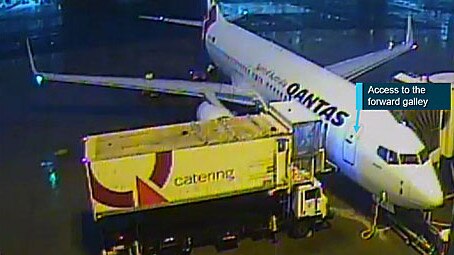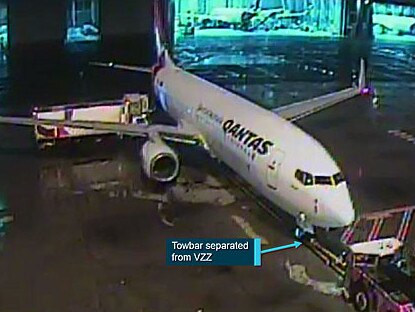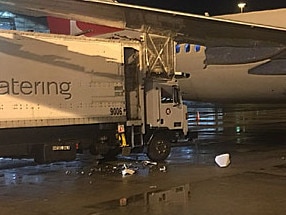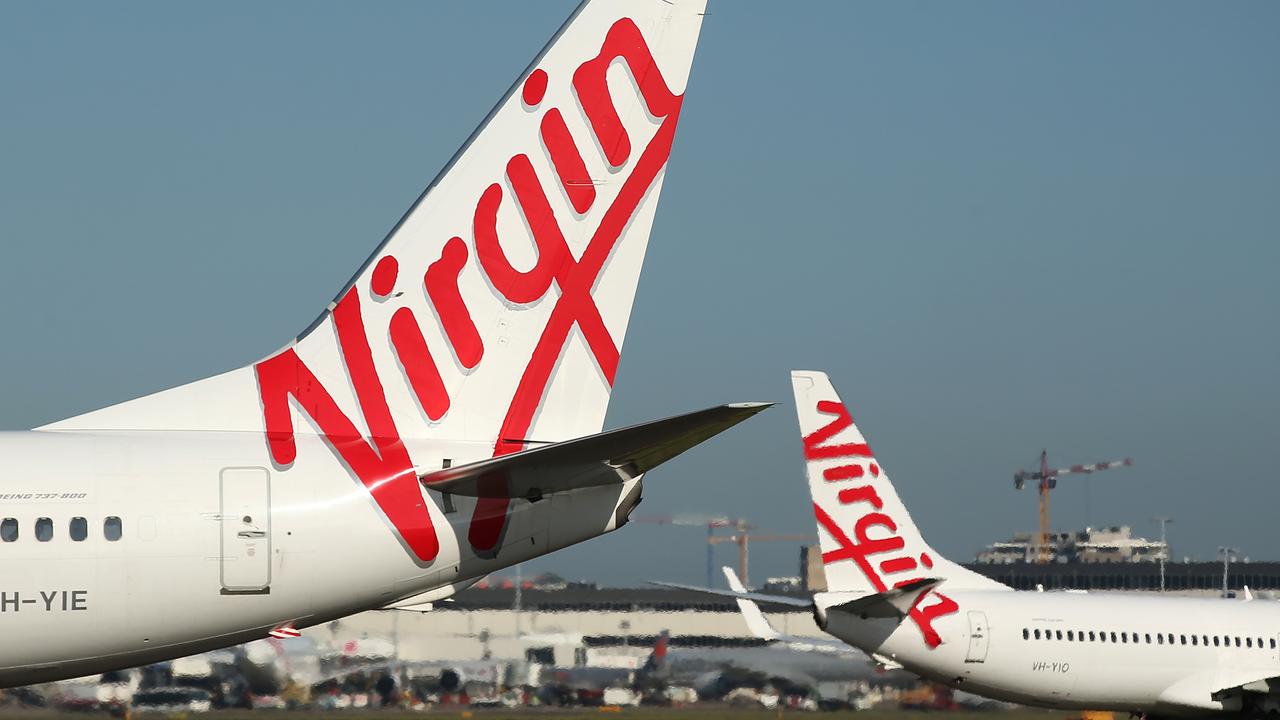Qantas 737 and catering van collided because engineer was trying to stay out of rain
An investigation has found a collision between a Qantas 737 and a catering truck occurred because the dispatch engineer was trying to stay out of the rain.

An investigation has found a collision between a Qantas aircraft and a catering truck at Sydney Airport occurred because the dispatch engineer was trying to stay out of the rain.
The Boeing 737 was damaged in the incident on October 14, 2017, when it was being prepared for a flight to Melbourne.
The Australian Transport Safety Bureau report found the truck was transferring catering to a new aircraft because the 737 that was meant to have made the journey had no battery power.

As loading was carried out, the engineer completed his walk around of the aircraft and saw the catering crew close the main entry door and start to retract the loading platform.
While this was happening, the engineer returned to the tug and sat in the cabin, due to the wet conditions.
When air traffic control cleared the plane for pushback, the engineer leaned out of the tug cabin and visually checked the left forward main entry door.
He gave the thumbs up signal to begin pushback and as the aircraft started reversing, so did the catering truck.
A few moments later, the truck’s marshaller saw the plane moving and tried to alert the driver, just as the engineer also saw the truck was not clear and yelled at the tug driver to stop.

The tug stopped but the pins in the towbar sheared and it separated from the 737, which continued to roll for three or four metres.
Before coming to a stop, the right wing collided with the truck, resulting in substantial damage to the outboard flaps and wing structure between the flaps and aileron.
The ATSB investigation found the engineer was sitting in the tug cabin because he did not have his wet weather gear. His view of the truck from the tug cabin was obstructed by the aircraft, and he miscalculated how long it would take for the truck to move.
After the incident, Qantas issued safety information to staff, highlighting the importance of physically ensuring the pushback path was clear.
The airline also provided relevant training to the dispatch engineer involved.


